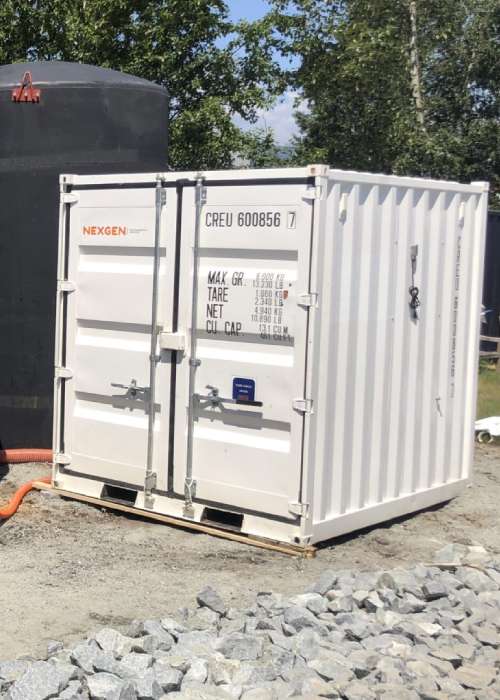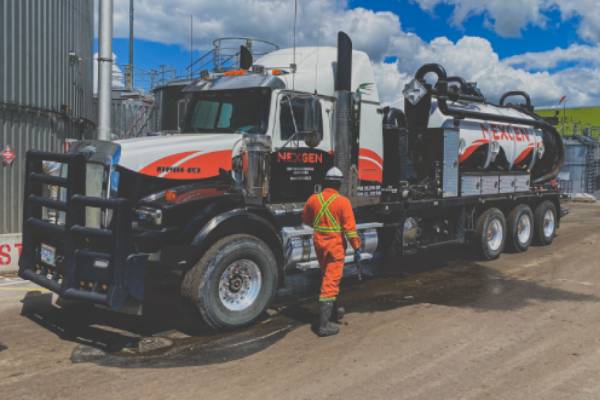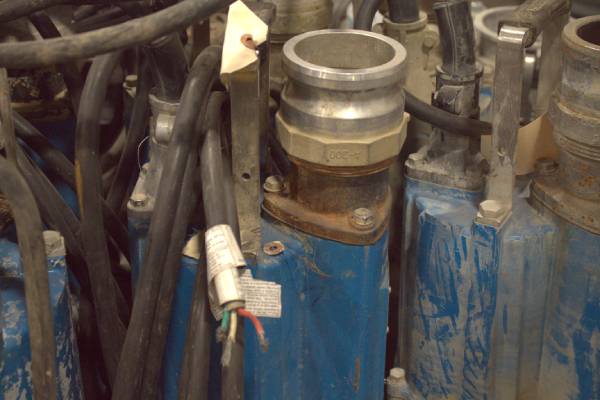Contaminated Treatment Systems: Empowering Water Purity and Environmental Safety
We’ve got you covered!
Superior Water Purity:
Effective removal of contaminants and impurities ensuring clean and safe water meeting environmental standards
Regulatory Compliance:
Customizable Solutions:
Ensuring Water Purity and Environmental Excellence
Discover the power of Contaminated Treatment Systems in dewatering operations. Our specialized processes and equipment effectively remove pollutants, ensuring water discharged meets regulatory standards and environmental requirements.
With a commitment to preserving water quality and safeguarding the environment, our solutions deliver efficient environmentally friendly dewatering processes across diverse industries.
Let us guide you through the transformative impact of our contaminated treatment systems, addressing water contamination challenges with precision and expertise.

Environmental Permits
Before commencing dewatering activities involving Contaminated Treatment Systems, Nexgen Environmental must obtain environmental permits from the appropriate provincial or federal authorities. These permits outline the conditions, limitations, and requirements for discharging treated water into the environment.
Water Quality Standards
Treated water discharged from Contaminated Treatment Systems must meet Canadian water quality standards and guidelines. These standards specify maximum allowable levels of various pollutants and contaminants to ensure that the discharged water does not pose a risk to human health or the environment.
Environmental Impact
In some cases, particularly for large-scale dewatering projects or projects located near environmentally sensitive areas, an Environmental Impact Assessment (EIA) may be required. An EIA evaluates the potential environmental effects of dewatering activities, identifies mitigation measures, and involves public consultation. This assessment ensures that the company takes necessary precautions to minimize environmental impacts.
Reporting Obligations
Contaminant Limits
Nexgen Environmental must comply with strict concentration limits for specific pollutants and contaminants in the treated water. These limits are designed to protect sensitive ecosystems and prevent adverse effects on aquatic life.
Public Notification
Depending on the scale and potential impacts of the project, we may be required to inform nearby communities or stakeholders about the activities of the project. Public notification provides transparency and allows affected parties to raise concerns, ensuring that we addresses any potential issues.

Pioneering Sustainable Solutions for Responsible Environmental Dewatering
Comprehensive Site Assessment
We excel in conducting comprehensive site assessments as the foundation of our Contaminated Treatment Systems. Our experienced team utilizes cutting-edge techniques, including water and soil sampling, to identify contamination sources and assess potential environmental risks. By gathering precise data, we develop a deep understanding of each project’s unique challenges, ensuring targeted and effective treatment planning.
Specialized Treatment Solutions
We take pride in offering specialized and innovative treatment solutions tailored to meet the specific needs of each project. Our team of experts designs and implements custom Contaminated Treatment Systems that effectively target and remove pollutants. From chemical treatment to advanced filtration and biological processes, our solutions are engineered to meet Canadian regulatory standards while delivering outstanding results.
Environmental Compliance and Sustainability
Environmental responsibility is at the core of our practices. We are committed to adhering to strict regulatory requirements and maintaining the highest water quality standards. Our team ensures compliance through detailed record-keeping, submitting required reports, and conducting thorough post-treatment assessments. We take pride in promoting sustainability by safeguarding the environment, enabling safe discharge or reuse of treated water, and contributing to a greener future.
Request a consultation today!
Project Process of Contaminated Treatment Systems
Explore our comprehensive guide on the Contaminated Treatment Systems project process. It begins with a thorough Site Assessment, identifying pollutants and risks through water and soil analysis.
A specialized treatment system is Designed and Installed, meeting regulations and site needs. Continuous Monitoring ensures efficacy, while Compliance and Reporting adhere to Canadian standards. A Post-Treatment Assessment verifies water safety.
1. Site Assessment: The project begins with a comprehensive site assessment to identify contamination sources, pollutants present, and potential environmental risks. This step involves sampling and analysis of water and soil to determine the extent of contamination.
2. Design and Planning: Based on the site assessment, a specialized contaminated treatment system is designed to effectively target and remove specific pollutants. The treatment system is tailored to meet regulatory requirements and the unique needs of the site.
3. Installation: The contaminated treatment system is installed and integrated into the dewatering operation. Our skilled technicians ensure that the system operates efficiently and meets performance standards.
4. Treatment and Monitoring: Contaminated water is treated using various techniques such as chemical treatment, filtration, or biological processes. Regular monitoring and testing of water quality ensure the effectiveness of the treatment system.
5. Compliance and Reporting: Throughout the project, Nexgen Environmental complies with Canadian regulatory requirements. We maintain detailed records, submit required reports, and adhere to environmental standards.
6. Post-Treatment Assessment: After treatment, additional sampling and analysis are conducted to confirm that the water meets regulatory requirements and is safe for discharge or reuse.
To learn more about our contaminated treatment systems solutions and to request a consultation, be sure to contact us!
Years Established
Completed Projects
Related Services

Vacuum Truck
Removal of water and sediment, as well as, the transportation of collected material to a treatment facility for processing.

By-Pass Systems
Our team of experienced technicians employ various methods to redirect and control water flow for your project.

Pump Repairs
We diagnose, troubleshoot, repair and restore malfunctioning pumps used to remove water from various construction sites.
Let’s discuss your next project!
Contact us for a free estimate!
What is a Contaminated Treatment System, and when is it required?
A Contaminated Treatment System is designed to treat water that contains pollutants or contaminants, making it safe for discharge or reuse. It is required in dewatering projects where water quality must meet regulatory standards or environmental requirements.
What pollutants can a Contaminated Treatment System remove?
Contaminated Treatment Systems are versatile and can remove various pollutants, including chemicals, heavy metals, oil, organic compounds, and suspended solids, depending on the specific treatment processes employed.
How does a Contaminated Treatment System work?
Contaminated Treatment Systems use various techniques such as chemical treatment, filtration, settling, and biological processes to remove pollutants from water. Each system is designed based on the site’s characteristics and the specific contaminants present.
What are the benefits of using a Contaminated Treatment System?
Using a Contaminated Treatment System ensures compliance with environmental regulations, protects water quality, and prevents harmful impacts on ecosystems. It also allows for responsible water discharge and supports sustainable dewatering practices.
Are Contaminated Treatment Solutions cost-effective?
While the initial investment in a Contaminated Treatment System may vary based on the project’s scope, it ultimately reduces potential environmental liabilities and ensures smooth regulatory compliance, leading to long-term cost savings and enhanced reputation.
How do Contaminated Treatment Solutions contribute to environmental sustainability?
Contaminated Treatment Solutions promote environmental sustainability by preventing water pollution, protecting aquatic ecosystems, and conserving natural resources. By treating contaminated water responsibly, these systems play a vital role in environmental protection.
What post-treatment assessments are conducted to verify water quality?
After treatment, thorough post-treatment assessments are carried out through water quality testing and analysis to ensure that the treated water meets regulatory standards and is safe for discharge or reuse.
